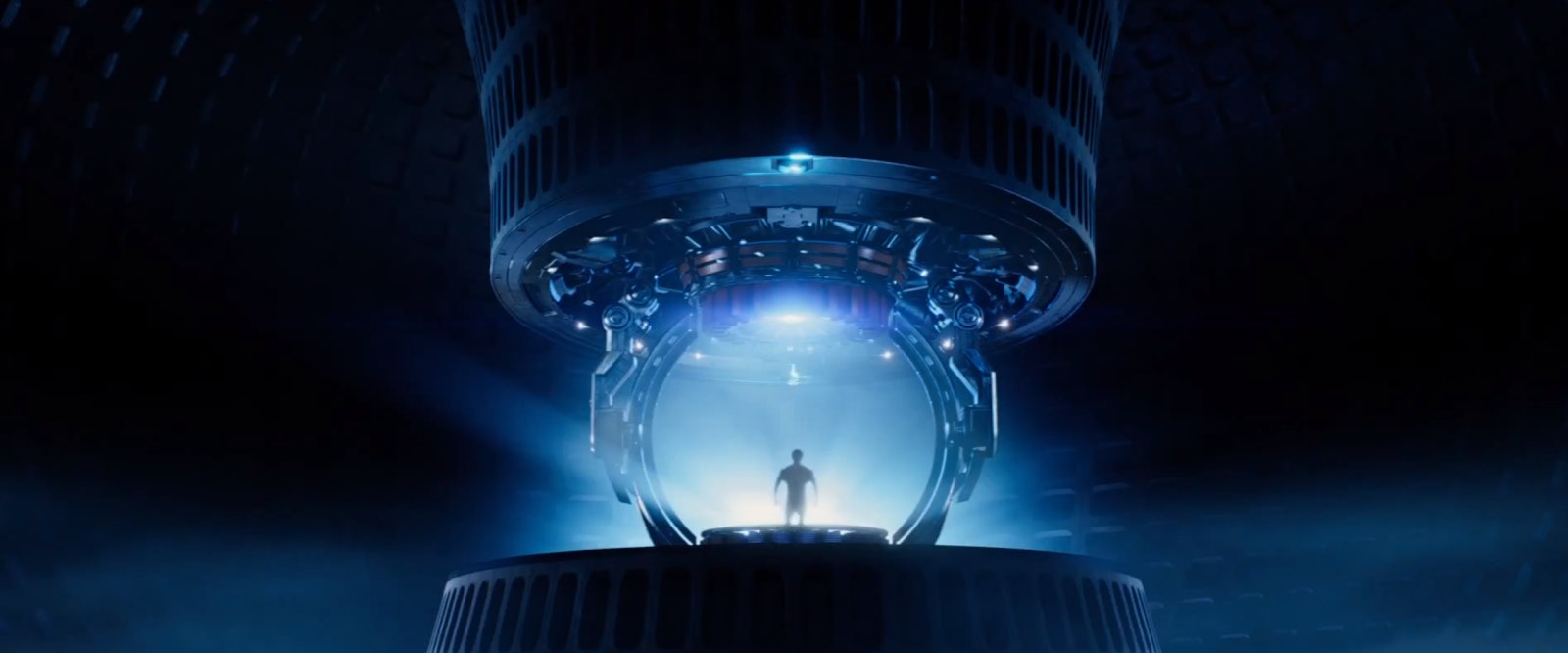
We all know there’s no such thing as a time machine, but that’s never stopped Hollywood from building them.
These time-defying contraptions fill us with wonder because, while we’re innately curious with a desire to explore, we also love fawning over shiny screens and elaborate gadgetry. Humans are hardwired to push any button we see. No matter the ramifications.
H.G. Wells invented one of fiction’s first time machines in his 1895 novel — later visualized in two movies. Since then, we’ve seen time-traveling cars, boxes, phone booths, and more. Each has a unique build and hand-wavy explanation of how it “works.”
To understand the fictional mechanics of time-travel tech, Inverse spoke to astrophysicists, engineers, and philosophers about movie time machines. We discovered which films they love and loathe, from those cloaked as the mundane to the realistic and even the fantastic.
THE RULES OF TIME TRAVEL is an Inverse special issue exploring the evolution of science fiction's most imaginative sub-genre. From Marty McFly to Avengers: Endgame.
8. Bill & Ted’s Phone Booth
What it does: It takes you to another realm that enables you to move through time (the circuits of time).
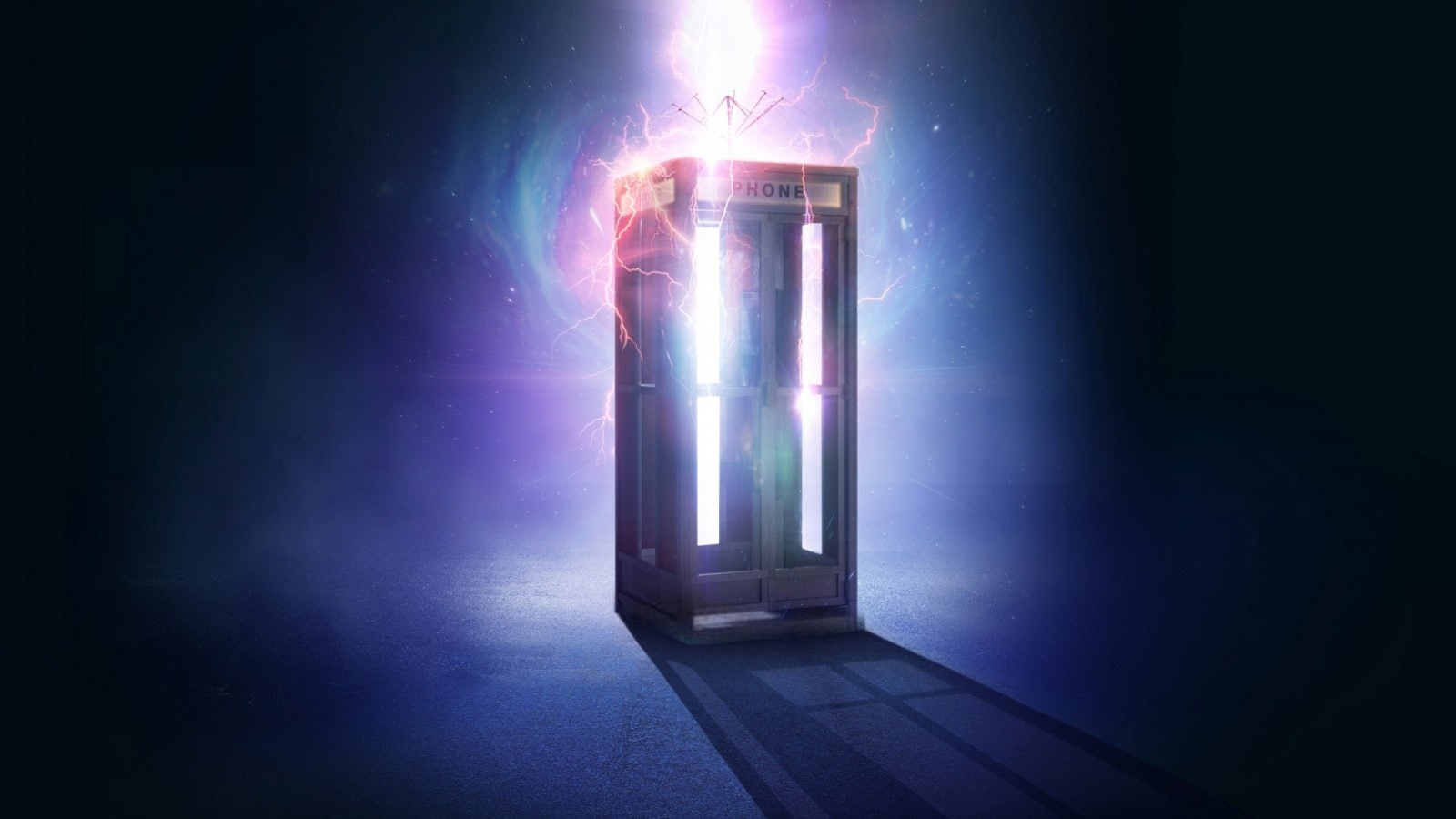
Yes, it might seem silly, but the phone booth in the Bill & Ted movies is a much-loved time machine.
Stuart Davie, a computational physicist and the vice president of data science at AI startup Peak, thinks the design makes this contraption so appealing.
“It really sits at the intersection of technical authenticity and the human-machine experience, grounding the whole movie series,” Davie tells Inverse. “It reminds the viewer that this is humanity's story of self-salvation, not that of a benevolent alien overlord.”
Roberto Casula, the lead technologist at a software developer, is interested in how the phone booth is steered to its destination by The Circuits of Time Directory, in which numbers punched into the keypad are 14 digits long and must specify time and space — otherwise the booth would never leave San Dimas.
“We assume time travel is restricted to only a few tens of thousands of years into the past rather than billions,” Casula says. “Even then only to a few key locations in space.”
“Perhaps the time machine is anchored in a 24-hour endless cycle, allowing travel backward and forward but only in increments of one day,” he adds. “But it’s probably best not to analyze too hard.”
7. Tenet’s Turnstile
What it does: It reverses your direction of travel.
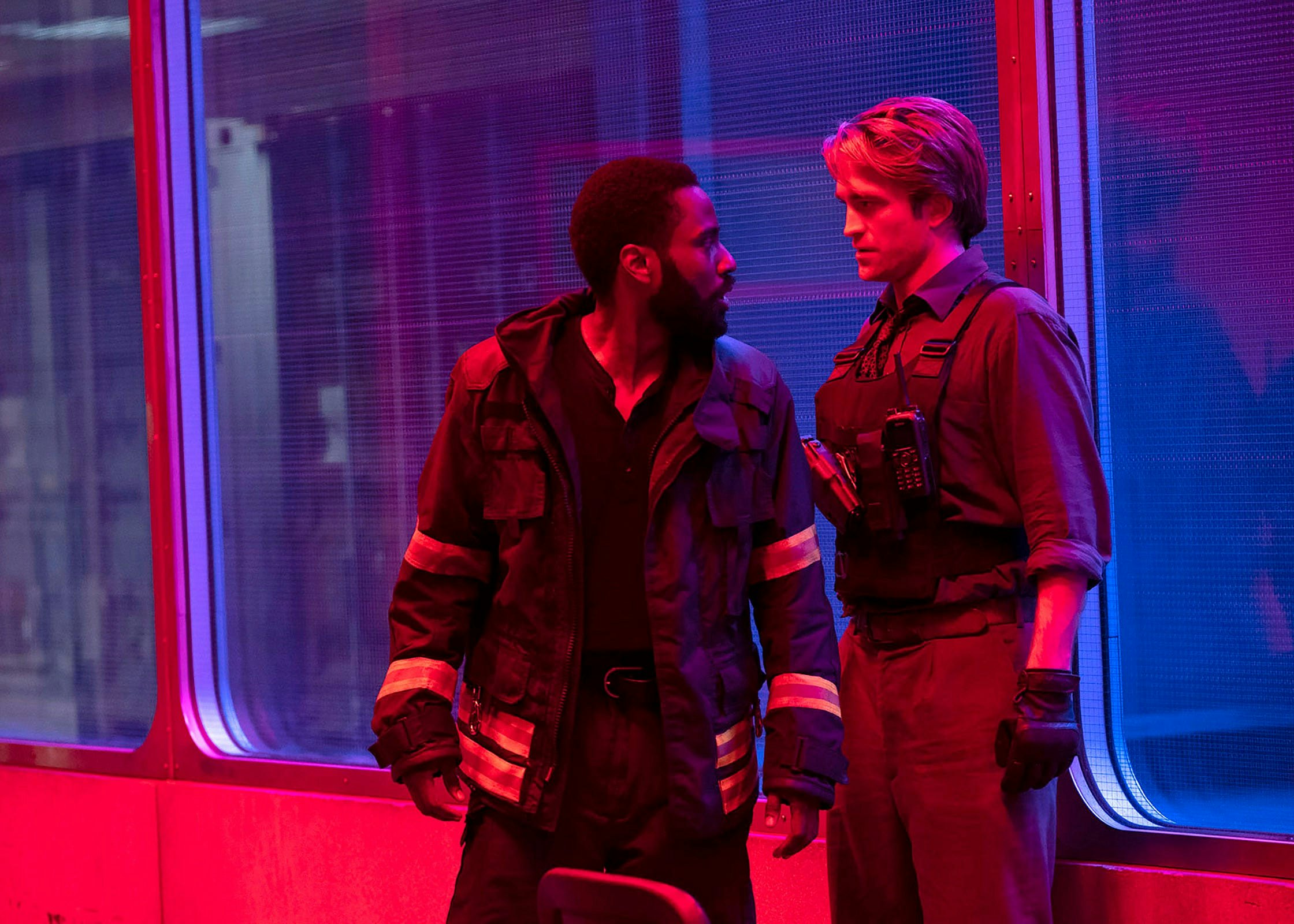
Tenet’s time machine is a huge turnstile — which turns one way or another, inverting and reverting the way you (or objects and even cars) travel through time.
“As a time-travel paradigm, the concept itself is a favorite of mine,” says Harun Šiljak, an assistant professor at Trinity College Dublin’s School of Engineering and a part-time sci-fi writer.
But what about the science?
According to Dr. Nikk Effingham, a philosopher at the University of Birmingham specializing in metaphysics and the philosophy of time travel, Tenet’s time machine is based on the idea thermodynamics is reversible
“This is great for film but a terrible interpretation of physics,” Effingham says. “It makes it sound like which way you’re traveling through time is some fundamental physical property we can dick around with in the same way that we can dick around with whether you’re magnetically charged or not, but that’s not what thermodynamics says.”
The time-travel mechanics in Tenet are grounded in the idea that the arrow of time (the direction we’re going in) isn’t a fundamental property. That’s why we see objects moving “forward” in Tenet and others – bullets, guns, and the time-reversed people – moving “backward.”
“That there might be bits of space-time where entropy is increasing for some objects and decreasing for others is possible given thermodynamics, but super unlikely,” Effingham says.
6. Doctor Who’s TARDIS
What it does: It takes you to another realm that enables you to move through time (the time vortex).
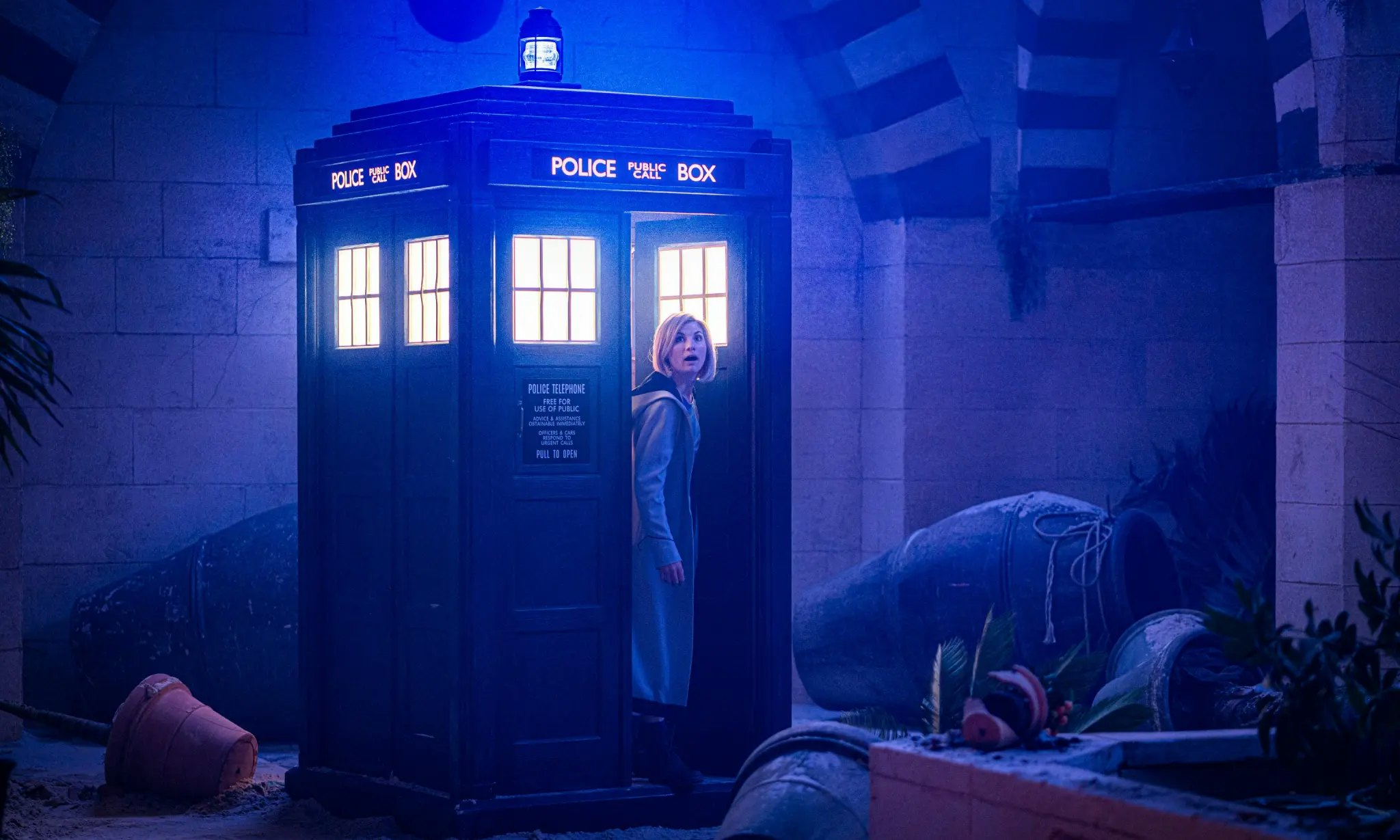
Everyone we spoke to mentioned this iconic machine, which looks like an old, blue, British police box.
“What other time machine gets a decorating job every few years, keeps updating its canon, and has an Olympic-sized swimming pool? Or even a personality?” Šiljak says. “The way the TARDIS operates and interacts with the Doctor is also a great suspension of disbelief catalyst that allows me to enjoy a plot that has holes.”
Its properties are bizarre, but its time-travel abilities are appealing to real scientists.
“The core of the TARDIS is a tesseract, which is a four-dimensional cube,” says Dr. Erin Macdonald, an astrophysicist, writer, producer, and Star Trek science advisor. “The reason this is great scientifically is our universe is four-dimensional, but we can only control three of those dimensions (space, not time). It logically makes sense that if we had an object that had four dimensions, that extra dimension could be time and could have more control than just space.”
Jan J. Eldridge, a theoretical astrophysicist and associate professor in the physics department at the University of Auckland, New Zealand, adds that the TARDIS’ ability to travel freely through both space and time also helps explain another of its key features: the interior doesn’t match the exterior.
“Any technology that allows you to bend space-time to travel through time would also leave you with the ability to stretch and square space-time itself,” she says.
5. Back to the Future’s DeLorean
What it does: The car “teleports” you back to the past with a “flux capacitor.”
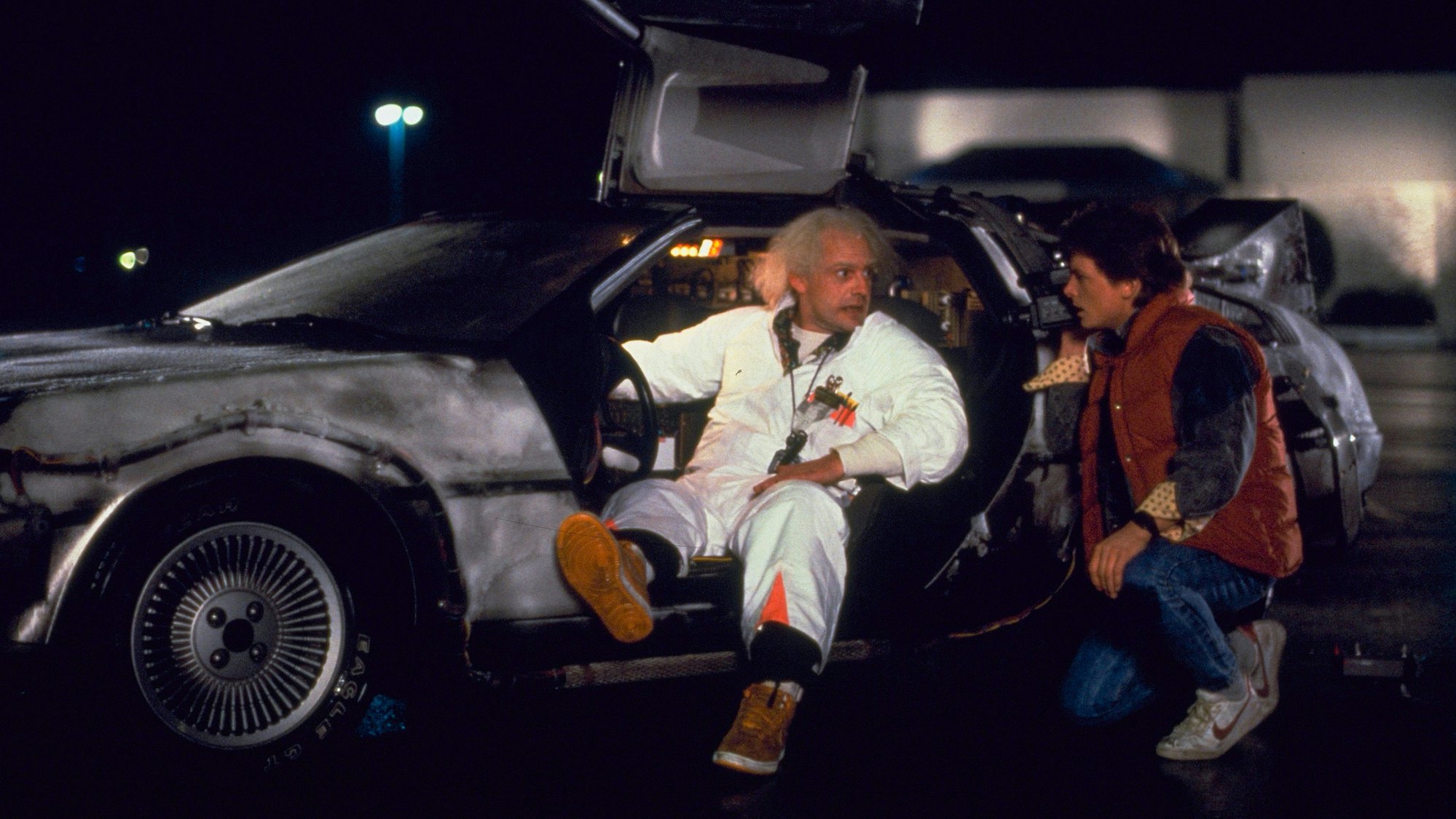
There are no prizes for guessing which time machine our expert panel of time-traversing enthusiasts like most.
“I adore the DeLorean,” Dr. Sanjana Curtis, an astrophysicist and researcher at the University of Chicago, tells Inverse. “Not because of the flux capacitor ‘tech’ but because it’s so camp.”
Curtis also loves that the DeLorean’s iconic design is just as weird as everything else in Back to the Future.
“It makes as much sense as time travel!”
As iconic as the DeLorean is, though, many others agreed: the science here is shaky. Specifically, experts argue that the vehicle would likely transport its driver through both space and time in equal measure — not just time.
“There’s no good reason why Marty goes from the parking lot to the pine tree farm rather than to the orbit of Jupiter,” Effingham says.
“It’s a classic.”
What about the mechanics of Doc’s invention?
Casula says that the idea of a “flux capacitor” technically makes sense since a capacitor is just an electronic device that stores energy while flux refers to anything that flows. Combined, the two words suggest a machine that can store and then release the flow of time. “But really, it’s just techno-babble… and we don’t care!”
That’s because regardless of the techno-babble, Back to the Future’s time travel is cohesive.
“It’s a classic because it establishes clear rules for how the time-travel mechanism works,” Star Trek advisor Macdonald says. “You have to be going at a specific speed, at a specific moment, with a specific amount of energy. It also establishes the impact of changing anything in the past, and what ripple effect it has in the future.”
4. H.G. Wells’ Time Machine
What it does: It reverses your direction of travel.
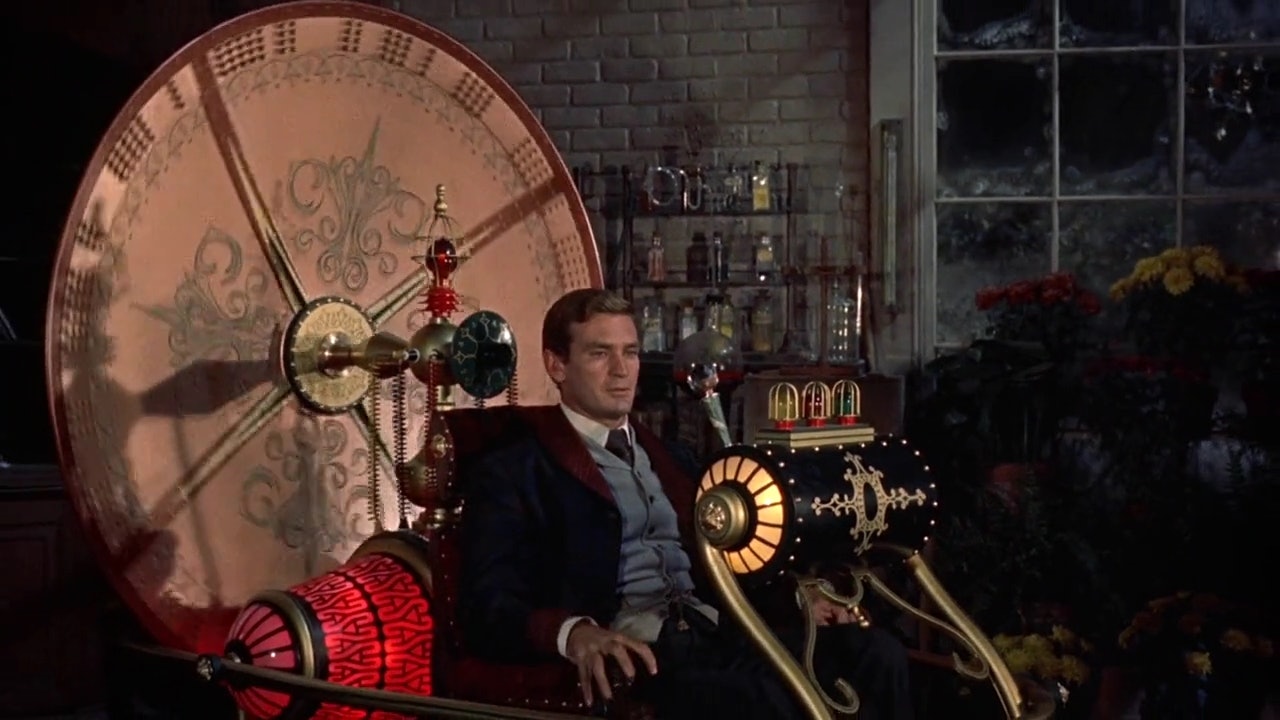
Although Wells didn’t describe his time machine in much detail in the book, the version imagined in the 1960 movie looks perfect for the era.
“H.G. Wells’ time machine from the 1960 movie is stylistically my favorite,” Laurence Maroney, lead artificial intelligence advocate at Google, tells Inverse. “Its cyberpunk awesomeness is mindblowing. I love the spinny wheel at the back with a compass rose. They just don’t make them like that anymore!”
“Its cyberpunk awesomeness is mindblowing.”
The way it works and moves through time is also different from most present-day depictions of time travel. The most memorable scenes in the movie take place when it remains static and the world flashes by — buildings and cities rise and fall in seconds from the perspective of the time traveler (a visual trick borrowed decades later in Futurama).
“Back in the day, time machines always went through time backwards in the same way they went through it forwards,” Effingham says. “Occupying regions of space-time in between rather than simply ‘teleporting’ there. It becomes less popular later on.”
3. Primer’s Box
What it does: It reverses your direction of travel.
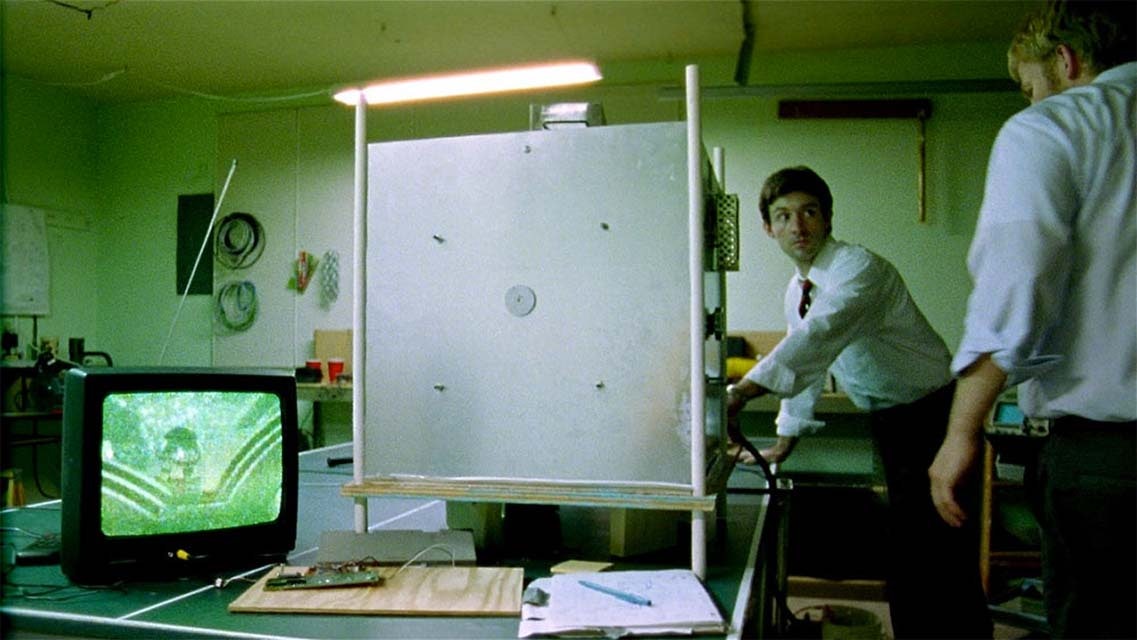
Everyone expert we interviewed mentioned Primer (some even showed us diagrams of its labyrinthine time loops).
“It’s the most deliciously confusing time-travel film,” says Dr. Darian Raad, a research and development data scientist at AI company Peak. “It features a single looping, overlapping timeline that allows the characters to interact with continually multiplying copies of themselves.”
Primer, for those who haven’t seen it, features two, person-sized time machine boxes. Main characters Aaron and Abe use them to travel six hours into the past. But as tensions rise, timelines get messy, and they eventually rely on additional “failsafe” boxes to travel further through time to try to resolve the issues the shorter trips create.
“The beauty of a film like Primer is it makes perfect sense to you while you’re watching it,” Macdonald says.
“...reminds me of a small-scale Manhattan project.”
Effingham says Primer is actually a plausible example of time travel.
“By ‘plausible,’ I don’t mean ‘this could happen,” he clarifies. “It just runs less roughshod over the laws of physics than many other ideas.”
This hint of plausibility seems to make Primer’s time machines a firm favorite.
“The concept in Primer has a structure I like in hard science fiction: some legit maths wrapping around a speck of made-up science,” Šiljak says. “The particular flavor of ‘a garage project’ that’s reminiscent of early personal computer development and a fundamental natural concept, which reminds me of a small-scale Manhattan project, was appealing.”
2. Planet of the Apes’ Icarus
What it does: The spacecraft goes really, really fast.
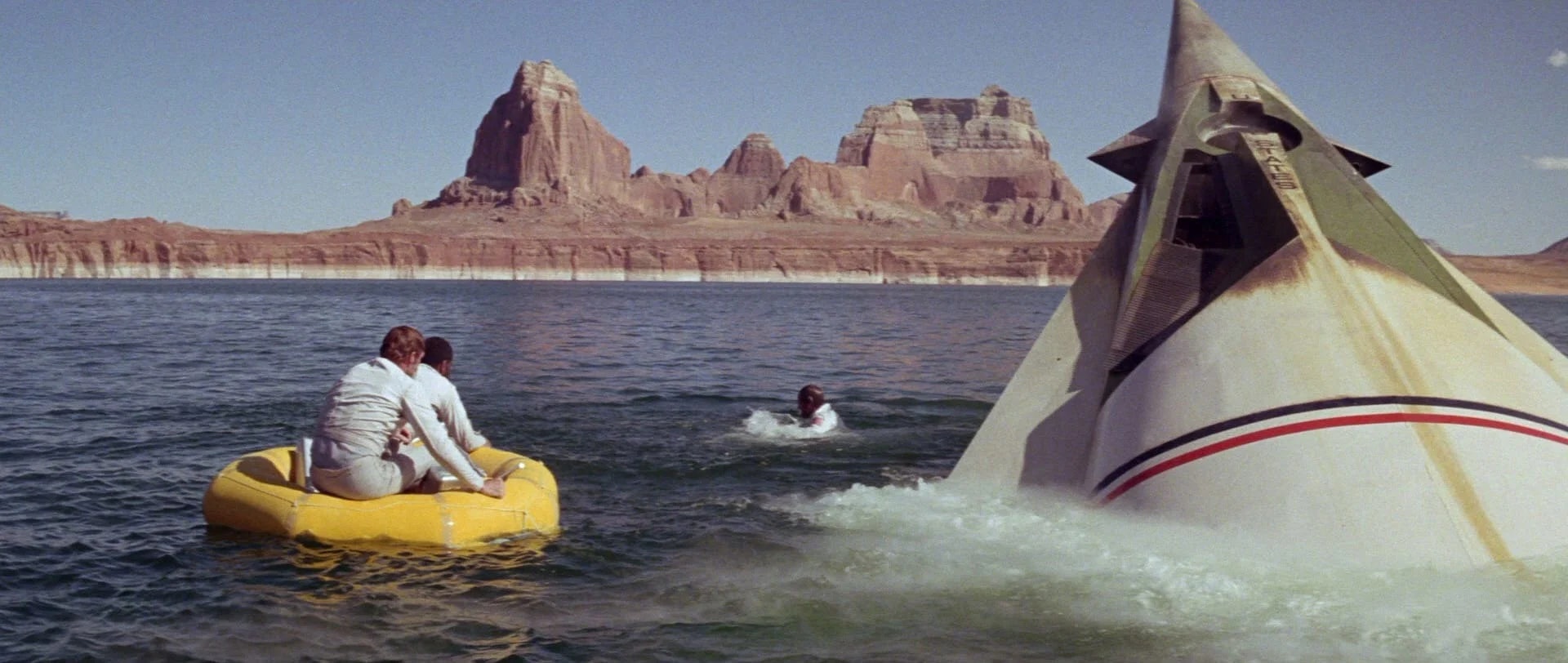
The Icarus/Liberty 1 spacecraft isn’t technically a time machine but it inadvertently becomes one. Several experts tell us it’s one of the most realistic depictions of time travel in film.
Dr. Ronald L. Mallett, professor emeritus of physics at the University of Connecticut and author of Time Traveler: A Scientist’s Personal Mission to Make Time Travel a Reality, says the original Planet of the Apes movie features his favorite time machine because it’s the only one that seems possible.
To understand how the spacecraft in Planet of the Apes can travel through time, we need to look to Einstein’s special theory of relativity and a complicated idea called time dilation — basically, that time passes differently for someone who is moving extremely fast compared to someone who is staying still.
”If you were on a rocket traveling close to the speed of light when you returned to Earth, only a few years might have passed for you, but decades could have passed on Earth,” Mallett says. “Since time is running at a normal rate for everyone else.”
That’s what happens in Planet of the Apes, causing the ship's crew to arrive on Earth in an unrecognizable distant future.
1. Terminator’s Time Displacement Equipment
What it does: The time machine “teleports” you back to the past.
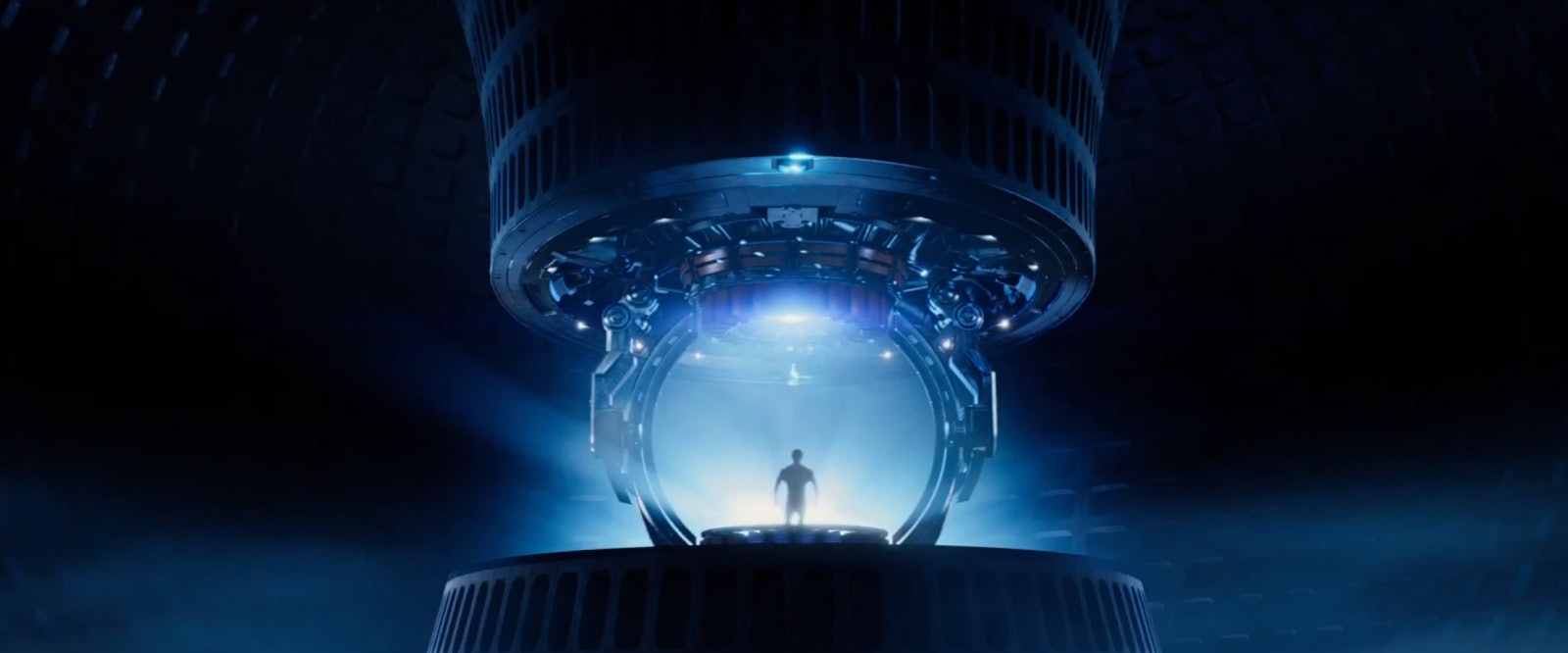
The Terminator movies are all about time travel, but we don’t get a good look at the Time Displacement Equipment that sends both cybernetic assassins and human soldiers to the past until Terminator Genisys in 2015. Until then, we only know there is a time machine because naked dudes keep dropping in from the future.
But when we do see it, boy does it bring the futuristic drama. Huge rotating rings! Lightning!
It’s also responsible for one of the most confusing and memorable time-travel loops in cinema history. In the original movie, John Connor sends Kyle Reese back in time to save Sarah Connor so Reese can… become John Connor’s father.
Effingham describes this as self-consistent: “The actions of the time travelers bring about the effects that cause the time traveler to go back in time.”
However, he sees the way the machine is used is bafflingly inconsistent.
“Skynet doesn’t seem to realize you can’t change the past and that whatever you do brings about the future that you’re in,” Effingham says. “Some rudimentary testing would be a dead giveaway that you couldn’t go back in time and change the past, no matter how hard you tried.”
It’s this conundrum that underpins the whole series. Without Reese and the first Terminator, there would be no John Connor and no Skynet, and the future never exactly gets rosier, though the people in the new futures don’t seemingly realize what has changed.
Of course, this is all scrapped in Terminator: Dark Fate. This movie rejects that time travel can only happen in a closed loop and instead introduces the idea that new, different timelines are created with each decision. For this to make sense you have to forget everything that happened after Terminator 2: Judgment Day — but that’s probably a good idea anyway.







